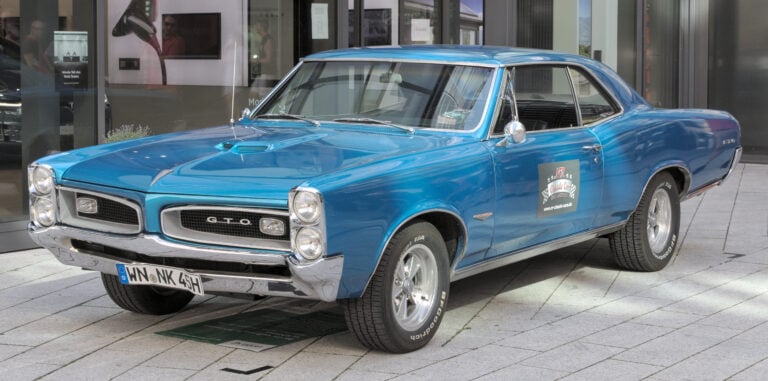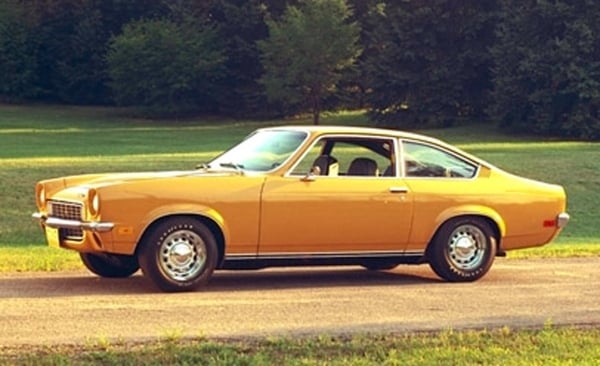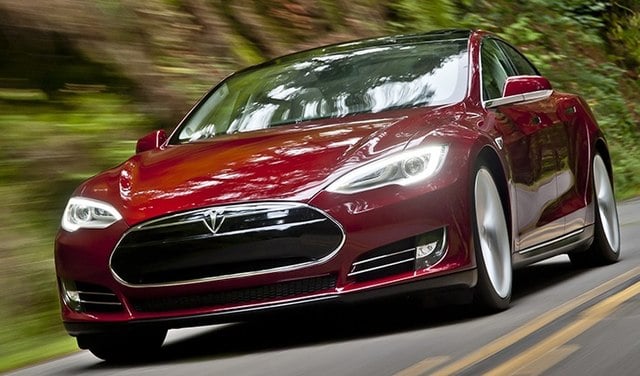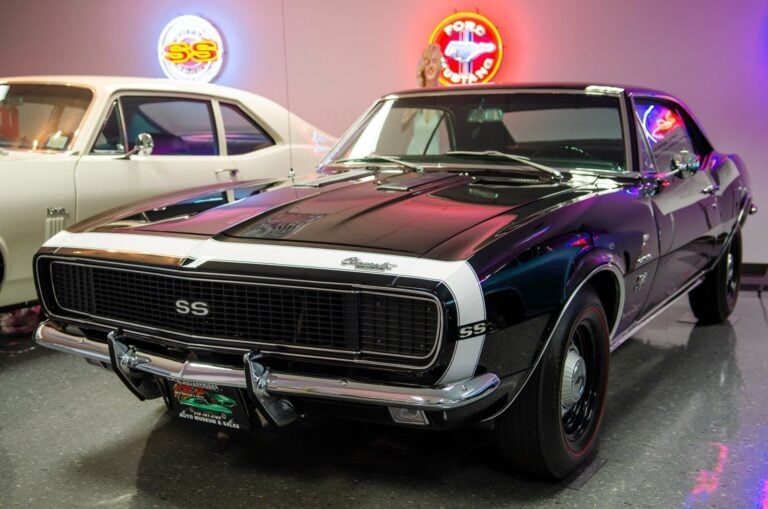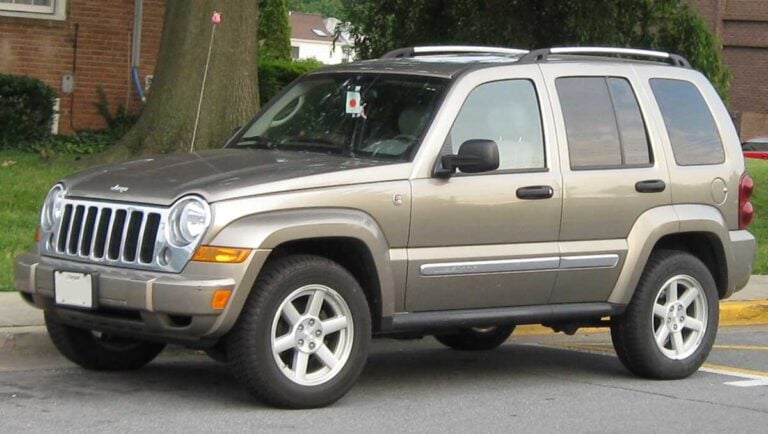30 Cars That Disappointed Everyone: From Overhyped Launches to Complete Market Failures
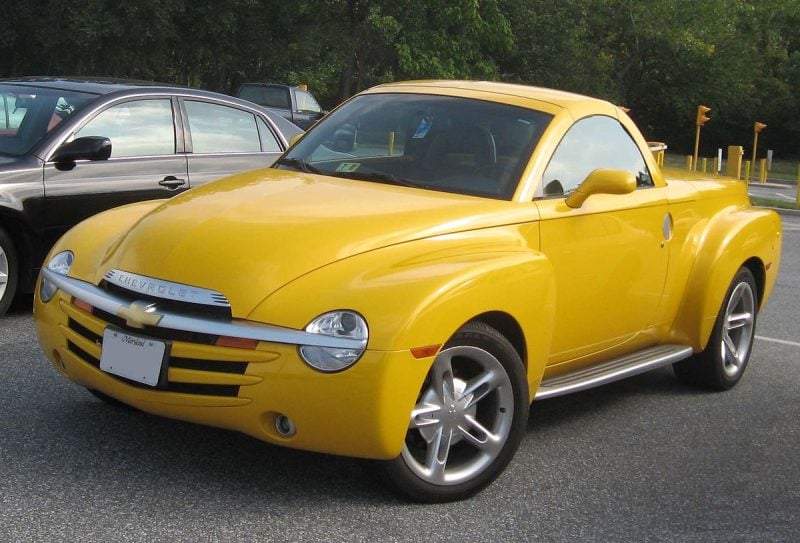
Car buying represents one of the most significant financial decisions consumers make, yet not every vehicle delivers on its promises. Some cars fail to meet expectations due to design flaws, mechanical issues, or simply falling short of the marketing hype that surrounded their launch.
Understanding which vehicles have historically disappointed buyers can help inform better purchasing decisions and avoid costly mistakes.
The automotive industry has produced numerous models that generated excitement during development but ultimately left owners frustrated with their choice.
From luxury vehicles that compromised quality to economy cars that failed to deliver basic reliability, these disappointments span across all price ranges and market segments.
This examination covers vehicles from major manufacturers including American, European, and Asian brands that failed to satisfy consumer expectations for various reasons ranging from poor build quality to questionable styling choices.
Here are 30 cars that disappointed everyone:
1. Pontiac Aztek

The Pontiac Aztek earned widespread criticism for its awkward and unattractive appearance when it debuted in 2001. Despite initial excitement about its innovative crossover design, the vehicle quickly became synonymous with automotive failure.
Built on the Pontiac Montana minivan platform, the Aztek suffered from questionable build quality and poor performance throughout its production run. The vehicle’s angular, polarizing styling alienated potential buyers who found it visually unappealing.
Pontiac’s marketing campaigns targeted younger audiences and emphasized the Aztek’s versatility, but these efforts failed to generate strong sales. The crossover included features like a built-in cooler and removable rear components, yet these innovations couldn’t overcome consumer rejection.
The Aztek lasted only until 2005, cementing its reputation as one of the automotive industry’s most notable disappointments. Its failure contributed to Pontiac’s declining brand image during the early 2000s.
2. Yugo GV

The Yugo GV arrived in America in 1985 from Yugoslavia with a price tag under $4,000. Zastava Automobiles marketed it as an affordable entry-level vehicle for budget-conscious consumers.
The car was based on an outdated Fiat design. Build quality felt cheap and unreliable from the start.
Owners experienced frequent breakdowns despite regular maintenance. The vehicle suffered from weak performance and poor safety ratings.
One infamous incident involved a Yugo rolling downhill uncontrolled and crashing into a fountain. This event became symbolic of the car’s mechanical problems.
The Yugo GV earned recognition as one of the most unreliable cars ever sold in America. Its reputation for poor craftsmanship made it a cautionary tale in automotive history.
Despite its low price point, the constant repairs and safety concerns made it a disappointing purchase for most buyers.
3. Ford Edsel
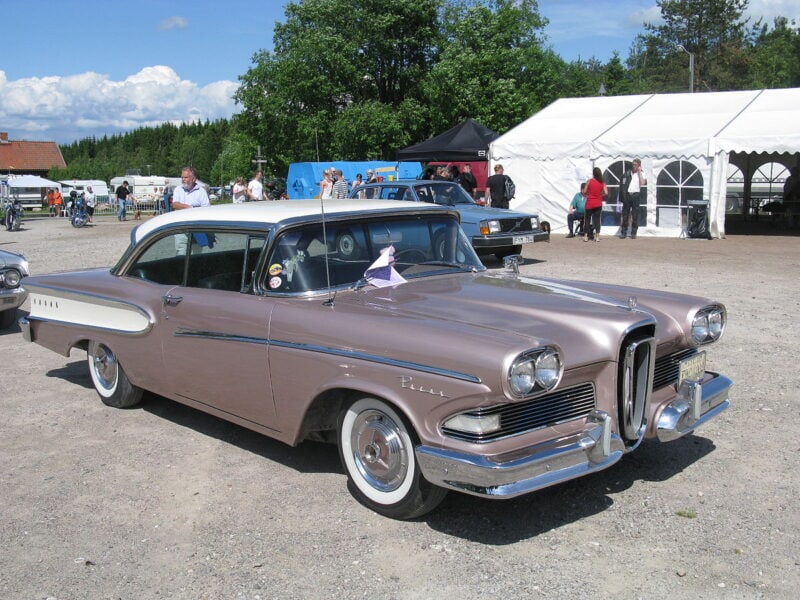
Ford launched the Edsel in 1957 as a bold attempt to capture the mid-tier automotive market. The company invested heavily in marketing, dubbing September 4, 1957 as “E-Day” and offering 18 different models at launch.
The Edsel’s distinctive design featured controversial styling that failed to resonate with consumers. Many found the car’s appearance unattractive, particularly its prominent vertical grille.
Ford misjudged market conditions during development. By the time the Edsel reached dealerships, demand for medium-priced cars was shrinking rather than expanding as Ford had predicted.
The launch coincided with rising popularity of compact cars that offered better fuel economy. The Edsel’s large size and high price tag made it less appealing to cost-conscious buyers.
Quality issues plagued early production models. The discrepancy between advertised features and actual performance disappointed many customers who had high expectations from the extensive marketing campaign.
Ford discontinued the Edsel after just three model years, making it one of automotive history’s most notorious failures.
4. Tesla Model X Plaid
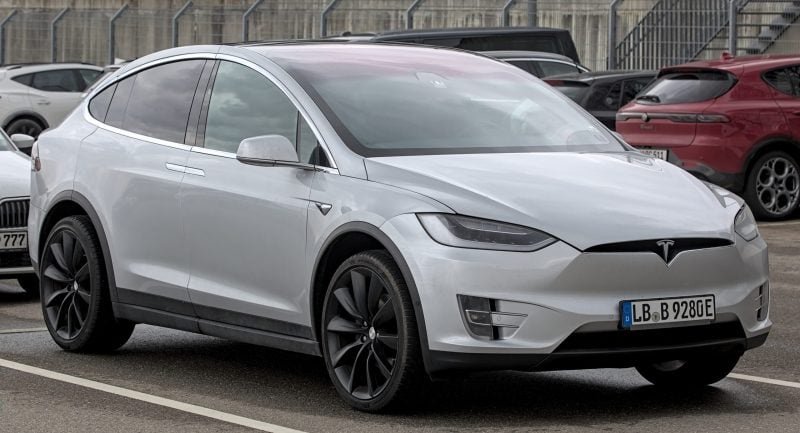
The Tesla Model X Plaid promised cutting-edge performance with its 2.5-second 0-60mph acceleration and 163mph top speed. Despite impressive specifications, the vehicle has faced significant reliability issues that disappointed many owners.
The falcon wing doors, a signature feature, have proven problematic with frequent malfunctions and high maintenance costs. These complex mechanisms often require extended repair times and expensive parts replacement.
Service delays plague Model X owners, with some vehicles spending months in Tesla-approved body shops. Parts availability remains a persistent issue, leading to frustrating wait times for repairs.
Early production years from 2016-2018 showed particularly poor reliability ratings. The complex engineering design creates service challenges that many technicians struggle to address efficiently.
The Model X Plaid’s premium price point makes these reliability concerns more disappointing for buyers who expected luxury-level dependability.
5. Chevrolet SSR

The Chevrolet SSR launched in 2003 as an unusual combination of pickup truck and convertible sports car. General Motors designed it with retro styling and composite body panels to capture marketplace attention.
The SSR featured powerful V8 engines, including 5.3L and 6.0L options. Despite this performance capability, the vehicle suffered from significant design flaws that contributed to its poor market reception.
One major issue involved plastic support components holding the frame together, which often led to structural problems. The powerful engines were paired with a platform that didn’t maximize efficiency or utility.
Owners experienced poor handling characteristics and cramped interior space. The high price point combined with limited practical utility resulted in disappointing sales figures.
The SSR’s impracticality and awkward appearance made it a commercial failure despite positive initial reception from automotive press.
6. Fiat Multipla
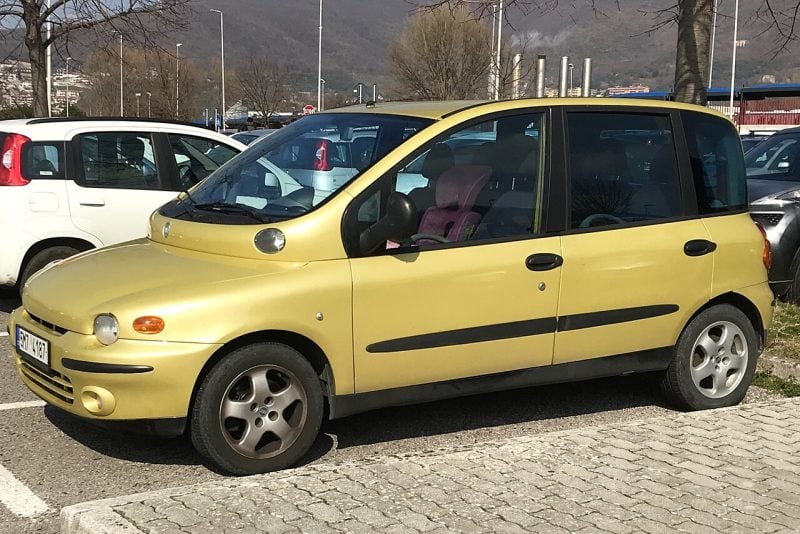
The Fiat Multipla earned its place as one of the most disappointing cars through its polarizing design choices. Released in 1998, this compact MPV featured an unconventional six-seat layout with two rows of three seats each.
The vehicle’s unusual appearance regularly lands it on “world’s ugliest cars” lists. Its bulbous headlights and awkward proportions created a design that failed to appeal to mainstream buyers.
Despite offering practical interior space, the Multipla’s exterior styling overshadowed its functional benefits. The car’s strange proportions and mismatched design elements made it visually jarring to most consumers.
Fiat attempted to compete with successful MPVs like the Renault Megane Scenic but missed the mark. The Multipla’s radical design approach backfired, alienating potential buyers who preferred more conventional styling.
The car was never sold in the U.S. market, limiting its global reach and commercial success.
7. Nissan Juke
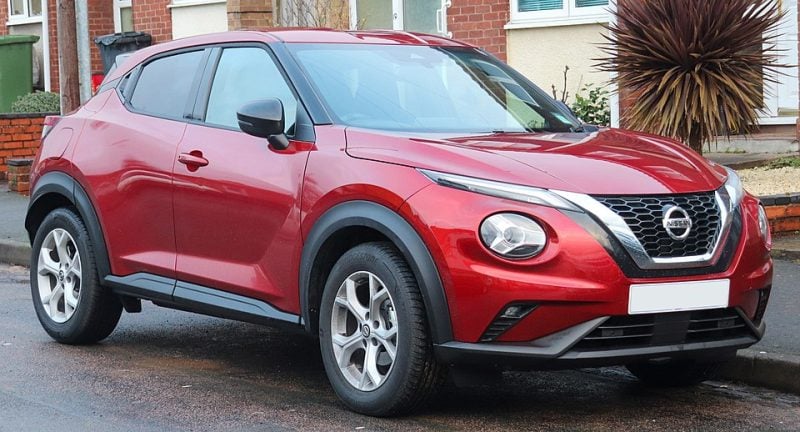
The Nissan Juke divided opinions from its 2009 debut with polarizing styling and questionable design choices. Its bug-eyed headlights and bulbous proportions created an instantly recognizable but controversial appearance.
Interior space suffered significantly due to the compact crossover’s awkward proportions. Rear passengers faced cramped conditions while cargo capacity remained limited for its class.
Early model years from 2011-2013 experienced numerous reliability issues and quality problems. These years accumulated the most consumer complaints and required frequent repairs.
The driving position created visibility challenges for many drivers. Multiple blind spots and a low seating position made daily driving more difficult than expected.
Nissan discontinued the original Juke after just seven years of production. The model earned recognition as one of the most unreliable vehicles in recent automotive surveys, disappointing buyers who expected better from the Japanese automaker.
8. Dodge Dart (2013)
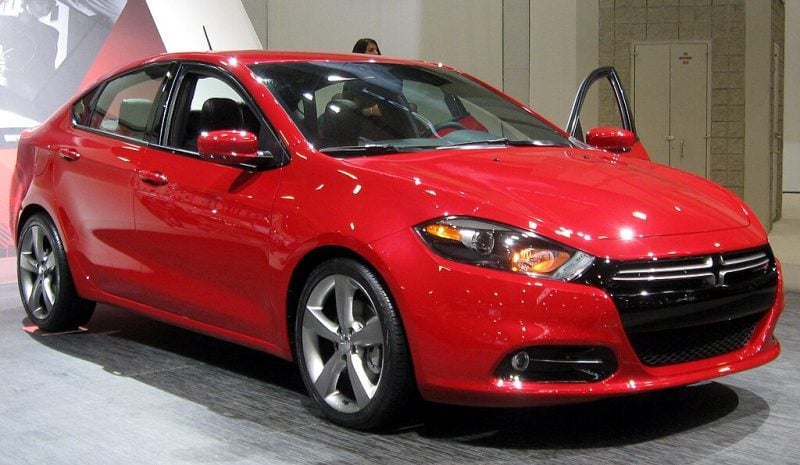
The 2013 Dodge Dart returned to the market after a long absence but failed to meet expectations. Dodge positioned it as a competitive compact sedan to rival established models in the segment.
The Dart accumulated 757 reported problems and defects from owners. Engine and transmission issues topped the complaint list, creating reliability concerns for buyers.
Consumer Reports gave the Dart an overall score of 53 with a minus-81 reliability rating. The publication noted lackluster engine choices and unimpressive fuel economy despite praising its solid build quality.
Power train problems dominated complaints with 550 reported issues. Service brake problems ranked second with 297 complaints, raising safety concerns for drivers.
The Dart’s first generation ranked 50th out of 54 generations in reliability surveys. Poor sales performance and mounting reliability issues contributed to its reputation as a disappointing comeback vehicle.
9. Mercedes-Benz A-Class W168
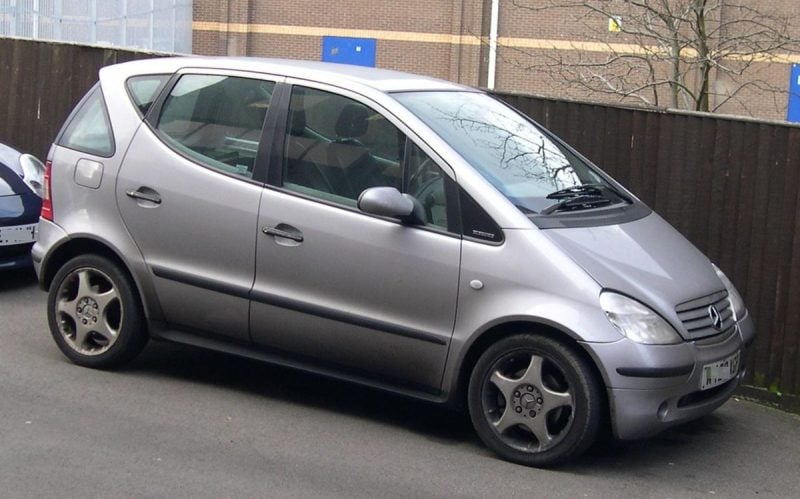
The Mercedes-Benz A-Class W168 launched in 1997 as the brand’s first compact car and front-wheel drive vehicle. It represented a bold departure from traditional Mercedes design philosophy.
The car gained instant notoriety for failing the “elk test” during safety evaluations. This high-profile incident damaged its reputation before many buyers even saw the vehicle.
Mercedes launched the W168 during what is now recognized as the company’s reliability low point. The first-generation A-Class suffered from numerous mechanical issues and quality problems.
Common problems included electrical faults, transmission issues, and premature component failures. These reliability concerns tarnished the luxury brand’s reputation in the compact car segment.
The W168 was eventually replaced by the vastly improved W169 generation in 2004. Despite its innovative sandwich floor design, the original A-Class remains a disappointment in Mercedes-Benz history.
10. Jeep Compass (2007)
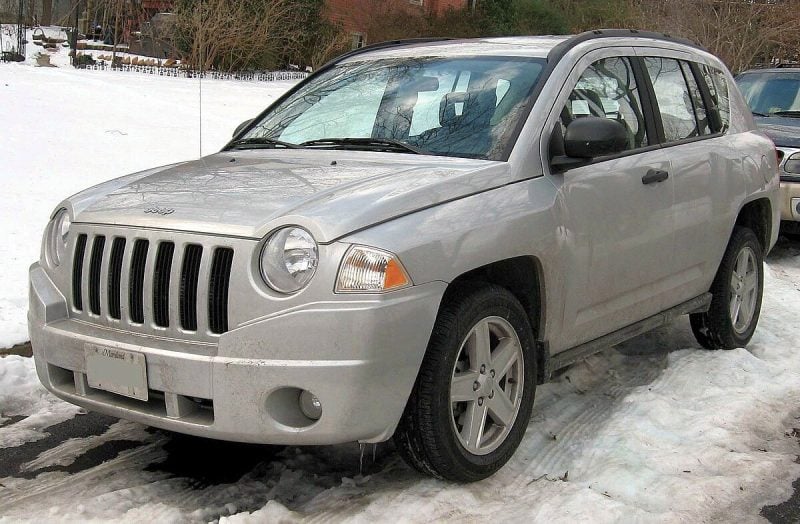
The 2007 Jeep Compass marked the beginning of a troubled era for the nameplate. Built on the Dodge Caliber platform, it failed to deliver the rugged capability expected from the Jeep brand.
The first-generation Compass lacked the power and off-road ability that Jeep enthusiasts demanded. Its weak engine performance left drivers underwhelmed on both city streets and trails.
Interior quality became a major complaint among owners. The cabin featured cheap materials and poor build quality that didn’t match competitor standards.
Reliability issues plagued the 2007 model year significantly. The vehicle accumulated 484 reported problems and defects, with suspension, electrical, and engine troubles leading the complaints.
The Compass struggled to find its identity as either a capable SUV or practical crossover. It delivered neither the adventure-ready features of traditional Jeeps nor the refined driving experience of modern crossovers.
11. Cadillac Cimarron
The Cadillac Cimarron represented one of the most damaging badge engineering failures in automotive history. Introduced in 1982, it was essentially a rebadged Chevrolet Cavalier with minimal modifications.
Cadillac attempted to compete with European luxury compact cars like Mercedes-Benz models. The execution fell far short of expectations and brand standards.
The Cimarron featured an underpowered 1.8-liter four-cylinder engine that delivered poor performance. The interior used cheap materials despite the luxury positioning.
Buyers could easily identify the car’s economy car origins. The higher price tag couldn’t justify the lack of genuine luxury features or refinement.
The vehicle significantly damaged Cadillac’s reputation and brand image. It became a cautionary tale about improper market positioning and insufficient product development time.
12. Honda Insight (First Gen)
The first-generation Honda Insight debuted in 1999 as America’s first production hybrid vehicle. Despite this historic achievement, the two-door hatchback failed to capture mainstream attention.
The Insight’s unconventional design featured covered rear wheels and aerodynamic styling that looked odd even by early 2000s standards. This funky appearance deterred many potential buyers who preferred more conventional vehicles.
Practicality issues plagued the model from launch. The two-seater configuration limited its appeal to families and commuters who needed passenger space or cargo capacity.
While the Insight delivered exceptional fuel economy figures, it suffered from refinement problems and lacked the polish consumers expected. The Toyota Prius, which arrived shortly after, outsold the Insight by an 18-to-1 ratio.
Battery reliability became a significant concern as vehicles aged. Most original batteries developed problems after 10-15 years, requiring expensive replacements that often lasted only three years.
13. Volkswagen Phaeton
The Volkswagen Phaeton represented an ambitious attempt to break into the luxury sedan market. Launched in the early 2000s, it featured exceptional engineering and premium materials that rivaled Mercedes-Benz and BMW.
Despite its impressive technical capabilities, the Phaeton struggled with market acceptance. The high price point conflicted with Volkswagen’s mainstream brand image, making it difficult for buyers to justify the cost.
The sedan offered advanced features like a W12 engine option and sophisticated climate control systems. It was assembled in a specialized glass-walled factory in Dresden, emphasizing quality craftsmanship.
Sales performance fell far short of expectations, particularly in the US market where it lasted only from 2004 to 2006. The vehicle’s premium pricing competed directly with established luxury brands that carried more prestigious badges.
Production ended in 2016 after nearly 15 years, marking the conclusion of Volkswagen’s luxury flagship experiment.
14. Renault Avantime
The Renault Avantime attempted to blend coupe and MPV design elements into a single vehicle. This unconventional approach created a polarizing appearance that confused potential buyers.
Renault struggled with technical issues during development. The frameless windows proved particularly problematic, causing sealing difficulties that delayed the car’s launch.
The Avantime’s avant-garde styling was considered ahead of its time. While some praised its boldness, many consumers rejected its unusual appearance and niche appeal.
Market positioning further complicated its prospects. Renault simultaneously offered the Vel Satis, another large avant-garde vehicle, which split marketing focus and consumer attention.
The car’s limited practicality undermined its MPV credentials. Despite offering a roomy interior, the Avantime failed to deliver the functionality buyers expected from a multi-purpose vehicle.
Commercial failure was swift and decisive. Poor sales numbers contributed to the end of Renault’s partnership with manufacturer Matra.
15. Mazda RX-8
The Mazda RX-8 arrived in 2004 as the successor to the beloved RX-7, but it failed to live up to expectations. Many enthusiasts felt disappointed by the car’s departure from its predecessor’s formula.
The rotary engine created significant reliability issues. Faulty apex seals caused compression loss, often before reaching 150,000 miles. Many owners faced expensive engine rebuilds or replacements.
Early model years, particularly 2004 and 2005, were plagued with the most problems. The rotary engine required extensive maintenance and care that many mainstream buyers weren’t prepared for.
Mazda tried to make the RX-8 more accessible with usable back seats and smoother operation. However, this mainstream approach didn’t suit the quirky rotary engine’s demanding nature.
The car’s high fuel consumption and maintenance requirements deterred many potential buyers who expected typical sports car ownership.
16. Mitsubishi Eclipse GST
The Mitsubishi Eclipse GST promised turbocharged excitement but delivered mechanical headaches instead. This sports car variant featured a 2.0-liter turbocharged engine that looked impressive on paper.
Engine reliability became the GST’s biggest weakness. The 4G63 turbo engine suffered from frequent failures and required constant maintenance. Many owners experienced costly repairs that exceeded the car’s value.
The third-generation Eclipse marked a significant departure from earlier models. Mitsubishi’s attempt to modernize the platform resulted in a car that lost the respect of enthusiasts. The GST variant particularly struggled with electrical system problems.
Common issues included engine stalling and unexpected breakdowns. These problems left drivers stranded and frustrated with their purchase. The combination of high maintenance costs and poor reliability made the Eclipse GST a disappointing choice for performance car buyers.
17. Ford Taurus (Sixth Gen)
The sixth-generation Ford Taurus (2010-2019) promised a complete redesign with advanced safety features. Ford marketed it as a premium sedan with adaptive cruise control and blind spot monitoring.
Despite the visual improvements, reliability issues plagued this generation. The Taurus ranks 55th out of 94 generations for dependability according to industry data.
Engine problems dominate the complaint list with 291 reported issues. The water pump placement creates costly repair scenarios for owners.
Transmission failures and electrical system malfunctions appear frequently in owner reports. These problems often emerge after the warranty period expires.
The SHO variant faces additional turbocharger-related concerns. Repair costs for these performance issues can exceed the vehicle’s value.
Ford discontinued the Taurus in 2019, ending a troubled generation that failed to meet reliability expectations.
18. Chrysler PT Cruiser
The Chrysler PT Cruiser arrived in the early 2000s with retro-inspired styling that divided public opinion. Its distinctive design proved polarizing among consumers and critics alike.
The vehicle’s 2.4-liter engine delivered underwhelming performance for most drivers. Interior quality fell short of expectations, with cheap materials and poor fit-and-finish.
Reliability issues plagued multiple model years. Transmission failures occurred frequently, with repair costs often exceeding $2,500 for affected owners.
The 2006 model year proved particularly problematic. Electrical system malfunctions became common complaints among PT Cruiser owners.
Despite initial sales success, technical problems mounted in later production years. Quality control issues led to declining sales and eventual discontinuation in 2010.
The PT Cruiser’s combination of mediocre performance, reliability concerns, and controversial styling made it a disappointment for many buyers seeking practical transportation.
19. Smart Fortwo (First Gen)
The first-generation Smart Fortwo arrived with high expectations as an innovative city car solution. Its tiny footprint promised easy parking and fuel efficiency for urban drivers.
However, the reality fell short of the marketing hype. The engine often showed signs of wear around 80,000 miles, creating reliability concerns for buyers expecting long-term value.
The 2008 model year proved particularly problematic, with 164 reported issues making it the most complaint-heavy year. This pattern damaged the brand’s reputation early in its U.S. launch.
Safety concerns also emerged due to the car’s diminutive size. When parked next to full-size vehicles, the Smart’s vulnerability in potential collisions became apparent to many consumers.
The automated manual transmission felt jerky and unrefined compared to traditional automatics. This poor driving experience disappointed buyers who expected European engineering sophistication.
20. Lincoln Navigator (Early Models)
The Lincoln Navigator’s launch in 1998 promised luxury SUV excellence but delivered significant disappointments. The first generation models from 1998-2002 suffered from numerous reliability issues that frustrated owners.
Early Navigators experienced frequent transmission problems. The 4R100 automatic transmission often failed prematurely, requiring costly replacements. Many owners reported complete transmission failure before 100,000 miles.
Electrical systems proved problematic across early models. Dashboard electronics frequently malfunctioned, causing gauge clusters to fail. Power window motors and door locks regularly needed replacement.
The 2001-2003 model years received the most owner complaints. These vehicles struggled with air suspension failures that left owners stranded. The complex air ride system was expensive to repair and prone to repeated breakdowns.
Engine problems plagued the 5.4L V8 in early models. Spark plug ejection issues and intake manifold failures created expensive repair bills for owners.
21. Hyundai Veloster
The Hyundai Veloster entered the market with an unusual three-door design that promised sporty performance and fuel efficiency. However, several model years delivered significant problems that frustrated owners.
The 2014 and 2015 models experienced continuous engine troubles and transmission issues. These problems persisted despite manufacturer attempts at improvements throughout the production run.
Early model years suffered from frequent sunroof assembly failures. The power train components also proved unreliable, leading to costly repairs for owners.
Steering system problems plagued multiple model years. These issues affected vehicle handling and safety, requiring expensive fixes outside of warranty periods.
The Veloster’s unique design initially attracted buyers seeking something different. Unfortunately, the execution fell short of expectations, with reliability concerns overshadowing its distinctive appearance and fuel economy claims.
22. Saturn Ion
The Saturn Ion arrived in 2003 as Saturn’s replacement for the S-Series. The company placed high expectations on this compact car to revitalize the brand.
Consumer Reports called the Ion “disappointing” compared to its predecessor. The vehicle suffered from numerous quality issues that plagued owners throughout its production run.
Common problems included transmission failures, electrical malfunctions, and premature engine wear. These reliability concerns earned the Ion a poor reputation among consumers and automotive journalists.
The Ion’s build quality fell short of Saturn’s earlier standards. Many owners reported frequent trips to repair shops for various mechanical issues.
CarComplaints.com documented 332 complaints filed against the Saturn Ion. This high complaint volume reflected widespread dissatisfaction with the vehicle’s performance and durability.
The Ion’s disappointing reception contributed to Saturn’s declining market position. Production ended in 2007 after just five model years.
23. BMW Z3 Coupe
The BMW Z3 Coupe arrived as a fixed-roof variant of the popular Z3 roadster. Despite sharing the proven E36 platform with other BMW models, the coupe failed to capture enthusiasts’ hearts.
Its polarizing design became the primary source of disappointment. The distinctive rear hatch earned unflattering nicknames and divided opinions among potential buyers.
Performance expectations weren’t met either. Many buyers expected the coupe to deliver superior dynamics compared to the roadster, but the improvements were minimal.
The Z3 Coupe’s market reception was lukewarm. Sales figures reflected consumer indifference, with many preferring the traditional roadster or other BMW models.
Build quality issues also surfaced. Common problems included electrical faults and cooling system failures that frustrated owners.
The coupe’s limited practicality disappointed those seeking a versatile sports car. Despite its hatchback design, cargo space remained restricted and rear visibility was poor.
24. DeLorean DMC-12
The DeLorean DMC-12 became automotive history’s most famous failure. John DeLorean’s ambitious project launched in 1981 with high expectations and futuristic styling.
The car’s 2.85-liter V6 engine produced only 130 horsepower. This made it painfully slow compared to other sports cars of its era.
Production problems plagued the DMC-12 from the start. An unskilled workforce in Northern Ireland created numerous reliability issues with early models.
The stainless steel sports car carried a prohibitive price tag. It cost more than twice the original projected price, pricing out many potential buyers.
Quality control remained inconsistent throughout production. The car suffered from poor build quality and mechanical problems that frustrated owners.
Only 8,582 units were produced between 1981 and 1983. The company folded after just two years of production, leaving behind disappointed customers and unfulfilled promises.
25. Pontiac Fiero
The Pontiac Fiero debuted in 1984 as America’s first mass-produced mid-engine car. GM marketed it as an affordable sports car with exotic styling and European handling characteristics.
The 1984 model year proved disastrous. Early Fieros suffered from numerous reliability issues and poor build quality. The car’s sporty appearance promised performance that the underpowered engine couldn’t deliver.
Fire hazards plagued the model due to faulty wiring and oil leaks. Pontiac issued 403 service bulletins addressing various problems throughout the car’s production run.
The Fiero’s chassis used parts from other GM vehicles, limiting its true sports car potential. Limited production numbers meant inadequate dealer support and marketing reach.
By 1986, Pontiac had resolved most issues and improved the car significantly. However, GM discontinued the Fiero in 1988 after just four years due to poor sales and reputation damage from the problematic early years.
26. Saab 9-7X
The Saab 9-7X represented a significant departure from the brand’s traditional design philosophy. Built in Moraine, Ohio, this SUV was essentially a rebadged Chevrolet TrailBlazer with Saab styling cues.
Inside Line ranked the 2006 Saab 9-7X at number 49 on their list of the 100 worst cars of all time. The vehicle failed to capture the distinctive Swedish character that Saab enthusiasts expected from the brand.
Many drivers found the 9-7X’s performance underwhelming compared to other Saab models. The vehicle lacked the power and driving dynamics associated with the brand’s sedan lineup.
Saab purists criticized the company for abandoning its core competencies in favor of following SUV market trends. The 9-7X felt disconnected from Saab’s heritage of producing quirky, innovative vehicles that stood apart from mainstream offerings.
27. Isuzu VehiCROSS
The Isuzu VehiCROSS arrived in 1997 as a polarizing two-door SUV that divided opinion from day one. Its radical styling and unconventional design made it stand out, but not always in ways buyers appreciated.
Isuzu produced only 5,958 units during its limited production run. The vehicle featured advanced technology like the Torque on Demand system, which used traction control sensors to distribute power between front and rear wheels.
Despite its innovative features, the VehiCROSS suffered from reliability issues that plagued certain model years. Many owners experienced mechanical problems that transformed their initial excitement into frustration.
The vehicle’s bizarre appearance and impractical two-door configuration limited its appeal to mainstream buyers. While some enthusiasts appreciated its uniqueness, most consumers found it too unconventional for their needs.
The VehiCROSS became a curiosity rather than a success, disappointing those who expected more from Isuzu’s ambitious experiment.
28. Subaru B9 Tribeca
The Subaru B9 Tribeca represented a significant departure from the brand’s typical design philosophy when it launched in 2005. Subaru attempted to create a more upscale, family-oriented crossover SUV to compete in the growing mid-size segment.
The vehicle’s most controversial feature was its distinctive aircraft-inspired grille design. This polarizing styling choice alienated many traditional Subaru buyers who preferred the brand’s more conservative aesthetic.
Built on the Legacy platform, the Tribeca offered five and seven-seat configurations. Despite these practical elements, the vehicle struggled to find its audience in the competitive SUV market.
The B9 Tribeca ranks ninth in reliability among Subaru models according to owner complaints. Sales peaked at over 18,000 units in 2006 but declined steadily afterward.
Subaru discontinued the Tribeca in 2014 after nine years of production, marking the end of one of the brand’s most divisive models.
29. Chevrolet Captiva
The Chevrolet Captiva disappointed drivers with significant reliability issues throughout its production run. This midsize crossover SUV suffered from widespread transmission problems that created frustrating ownership experiences.
Engine failure emerged as a major concern for Captiva owners. Warning lights frequently illuminated dashboards, signaling serious mechanical problems that required expensive repairs.
The vehicle accumulated over 170 documented complaints from frustrated owners. These issues ranged from engine malfunctions to steering problems that compromised safety and reliability.
General Motors issued multiple recalls for the Captiva, with the largest occurring in 2014. This recall addressed two critical issues that affected vehicle performance and owner satisfaction.
Despite its seven-seat capacity and crossover design, the Captiva’s mechanical problems overshadowed its practical benefits. Many owners faced costly repairs that exceeded normal maintenance expectations for a modern SUV.
30. Volvo C30
The Volvo C30 arrived in 2006 as a three-door compact hatchback targeting younger buyers. Production ended in 2013 after disappointing sales numbers.
Despite Volvo’s reputation for safety and reliability, the C30 faced significant issues. The 2011 model year recorded the highest number of problems with 21 reported issues.
Common problems included gearbox failures and clutch malfunctions. Many owners experienced transmission issues around 40,000-45,000 miles.
Fuel economy proved particularly disappointing. Actual consumption fell 25% short of manufacturer claims, frustrating buyers who expected better efficiency.
The C30 shared 60% of its components with the Ford Focus, diluting Volvo’s premium positioning. This parts-sharing arrangement raised questions about the vehicle’s Swedish engineering credentials.
While the C30 offered attractive styling and comfortable interiors, reliability concerns and poor fuel economy damaged its reputation among consumers.
Common Reasons Behind Automotive Disappointment
Automotive disappointment stems from three primary factors that consistently plague problematic vehicles. These issues range from mechanical failures and poor engineering to misleading marketing promises and fundamental design flaws.
Performance Shortcomings
Underpowered engines represent the most common performance complaint among disappointed car owners. Many vehicles promise adequate acceleration but deliver sluggish responses that make highway merging dangerous.
Transmission problems plague numerous models across different manufacturers. Continuously variable transmissions (CVTs) in particular have earned criticism for their unreliable operation and expensive repair costs.
Poor fuel economy disappoints buyers who expect efficient operation. Vehicles that advertise impressive MPG ratings often fail to achieve these numbers in real-world driving conditions.
Inadequate handling characteristics make driving unpleasant and potentially unsafe. Cars with poor steering response, excessive body roll, or unpredictable braking behavior frustrate drivers who expect basic competency.
Unmet Consumer Expectations
Misleading marketing campaigns create unrealistic expectations about vehicle capabilities. Manufacturers often oversell features or performance specifications that don’t translate to actual driving experiences.
Feature functionality gaps occur when advertised technology fails to work as promised. Infotainment systems that crash frequently or advanced safety features that activate incorrectly create immediate buyer remorse.
Build quality inconsistencies disappoint consumers who expect consistent manufacturing standards. Panel gaps, interior rattles, and paint defects signal poor attention to detail.
Rapid depreciation rates shock owners who discover their vehicles lose value faster than expected. Some models depreciate 50% or more within the first two years of ownership.
Design and Reliability Issues
Chronic mechanical failures plague certain models with repeated breakdowns. Common issues include premature engine wear, electrical system malfunctions, and suspension component failures.
High maintenance costs burden owners with unexpected expenses. Vehicles requiring specialized parts or frequent service visits create financial stress beyond the initial purchase price.
Poor ergonomic design makes daily operation uncomfortable or inconvenient. Controls placed in awkward locations, uncomfortable seating, or limited visibility affect the driving experience.
Inadequate weather protection includes problems like water leaks, poor climate control, or insufficient rust protection that compromise vehicle integrity over time.
Long-Term Impact on Automotive Brands
Disappointing vehicle models create lasting damage to manufacturer reputations that extends far beyond initial sales figures. The automotive industry’s recovery from major failures requires substantial investment in rebuilding consumer confidence and implementing fundamental changes to development processes.
Brand Reputation and Consumer Trust
Vehicle failures severely damage brand credibility in ways that persist for decades. Companies like Volkswagen experienced long-term reputational harm following the emissions scandal, with effects continuing to influence customer loyalty years later.
Consumer trust erodes when manufacturers release unreliable models. Ford’s transmission issues in certain models led to persistent skepticism about the brand’s quality control. Toyota’s unintended acceleration problems temporarily damaged their reputation for reliability.
Key reputation impacts include:
- Decreased customer loyalty rates
- Reduced resale values across model lines
- Negative word-of-mouth marketing
- Increased warranty costs and legal expenses
Social media amplifies negative experiences faster than traditional complaints. A single model’s problems can affect perceptions of entire brand portfolios. Luxury brands face particularly severe consequences since reliability expectations are higher.
Recovery requires consistent quality improvements over multiple model years. Brands must demonstrate tangible changes rather than marketing promises alone.
Lessons Learned and Industry Changes
Failed models force manufacturers to reassess development processes and quality control measures. The industry adopted more rigorous testing protocols after high-profile recalls exposed inadequate validation procedures.
Automakers now invest heavily in pre-production testing. Extended real-world testing phases help identify problems before market launch. Computer simulations and durability testing have become more comprehensive.
Industry improvements include:
- Enhanced quality control systems
- Longer development timelines
- Improved supplier oversight
- Better customer feedback integration
Electric vehicle development benefits from lessons learned during traditional automotive failures. Manufacturers apply stricter battery testing and software validation processes based on past mistakes.
Companies restructured warranty programs to address consumer concerns. Extended coverage periods and improved customer service protocols help rebuild trust after disappointing releases.

